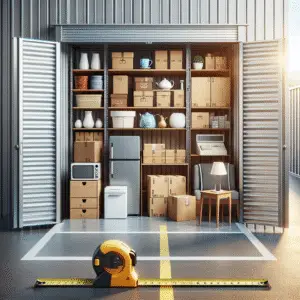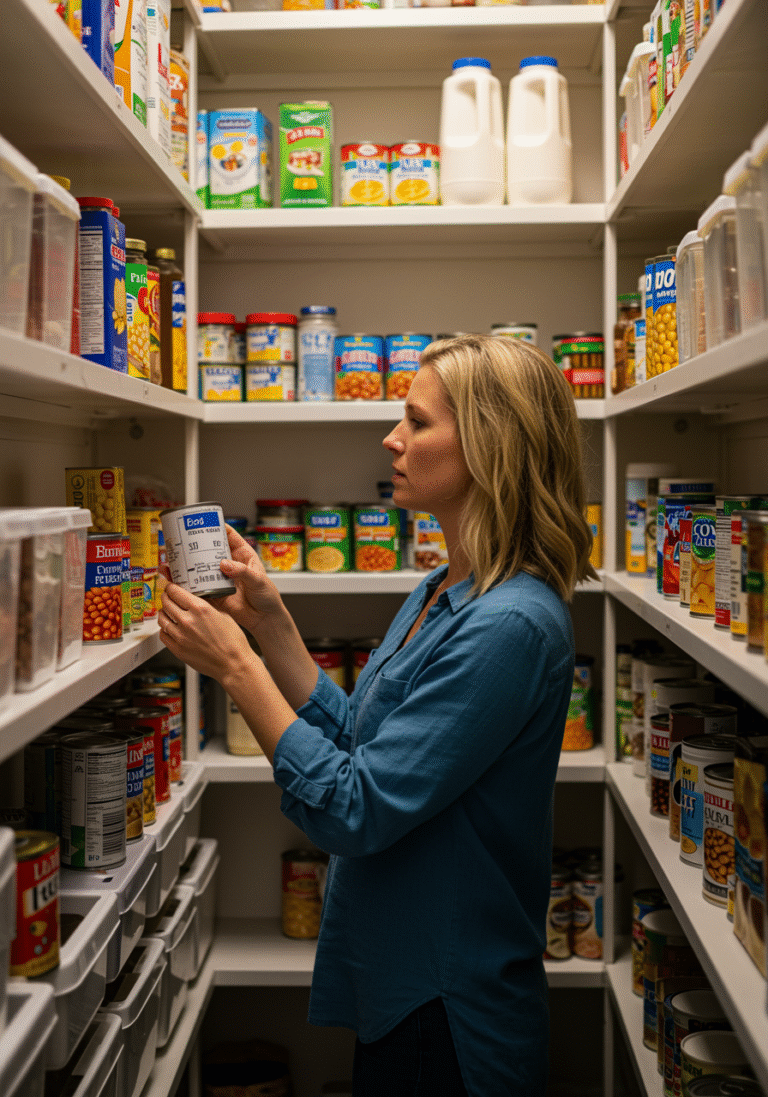Weather-Proofing Your Items in Temporary Storage: Complete Guide
Thousands of dollars lost, cherished family heirlooms destroyed, and priceless memories washed away – this is the devastating reality for countless people who underestimate nature’s wrath on their temporarily stored belongings. According to recent industry data, over 65% of storage-related insurance claims stem from preventable weather damage, with moisture alone accounting for nearly half of all destroyed items. Whether you’re between homes, renovating, or simply need extra space, failing to properly weather-proof your possessions can transform a temporary storage solution into a permanent nightmare of loss and regret.
Understanding Temporary Storage Options
When it comes to temporary storage, not all solutions offer equal protection against the elements. Indoor storage units typically provide superior shelter from direct weather exposure compared to outdoor options, with climate-controlled indoor facilities offering the highest level of protection for sensitive items. These premium units maintain consistent temperature and humidity levels year-round, though they come with a correspondingly higher price tag. Outdoor units, while more affordable and accessible, leave your belongings more vulnerable to temperature fluctuations, moisture problems, and potential pest intrusions.
Portable storage containers have grown tremendously in popularity, offering the convenience of having storage delivered directly to your location. These units vary widely in construction quality, with some featuring weather-resistant materials and seals while others provide minimal protection beyond shelter from direct rainfall. The advantage of portability comes with the trade-off of potentially less robust construction compared to permanent storage facilities. When selecting a portable option, carefully inspect the container’s condition, paying particular attention to the integrity of the roof, door seals, and any potential gaps where water might enter.
Self-storage facilities versus on-site storage present another important consideration in your weather-proofing strategy. Professional storage facilities typically offer better security and sometimes include climate control, but they remove your ability to quickly check on items during extreme weather events. On-site solutions like garage storage, backyard sheds, or portable containers kept on your property allow for immediate access and monitoring but may offer less protection unless specifically designed for weather resistance. Your choice should balance accessibility needs with the level of protection required for your specific items.
Common Weather Risks to Stored Items
Moisture and humidity represent the most pervasive and destructive forces threatening your stored possessions. Even in seemingly dry environments, humidity can silently damage electronics, warp wooden furniture, rust metal objects, and create perfect conditions for mold and mildew growth on textiles and paper goods. Relative humidity above 60% creates ideal conditions for mold growth, while levels below 30% can cause certain materials like wood to crack and split. This invisible threat works gradually but relentlessly, often causing damage long before it becomes visible to the naked eye.
Rain and flooding pose more immediate and catastrophic risks, especially for storage units with ground-level access or insufficient elevation. Just one inch of floodwater can destroy irreplaceable documents, photographs, and electronics, while saturating furniture, clothing, and other absorbent materials. The aftermath of water damage extends beyond the initial soaking – once moisture penetrates certain materials, secondary damage from mold can begin within 24-48 hours. This makes proper elevation and waterproofing crucial even in regions not typically prone to flooding, as a single unusual weather event can prove devastating.
Extreme temperature fluctuations create thermal stress that damages a surprising variety of possessions. Electronics can suffer from condensation when temperatures rapidly change, while vinyl records, artwork, and musical instruments often warp or crack under these conditions. Cold temperatures make plastic brittle and susceptible to breaking, while excessive heat can melt certain synthetic materials, warp wood, and accelerate chemical degradation in photographs and documents. Even items seemingly resistant to temperature changes, like metal tools, can suffer from the expansion and contraction cycle that eventually weakens their structural integrity.
Wind and storm exposure primarily threaten outdoor storage solutions, with powerful gusts potentially dislodging doors, creating gaps in seals, or, in extreme cases, toppling portable units altogether. The real danger often comes from wind-driven rain that can penetrate even small openings with surprising force. During high winds, debris can damage exterior surfaces or create new entry points for moisture. Hurricane-prone regions face particular challenges, as these powerful storms combine multiple threats – high winds, heavy rain, and potential flooding – into a perfect storm of storage risk.
Pest intrusion due to weather conditions represents an often-overlooked consequence of seasonal changes. As temperatures drop in autumn, rodents and insects seek warm shelter, making your storage unit an attractive target. Similarly, heavy rain events can drive pests to higher ground and into your stored belongings. Once inside, these unwanted visitors can cause extensive damage through chewing, nesting, and waste. Weather-proofing against pests involves not just sealing entry points but also considering how changing outdoor conditions might increase pressure from the local pest population.
Choosing Weather-Resistant Storage Solutions
When evaluating potential storage options, several key features separate truly weather-resistant units from those merely marketing themselves as such. Look for raised foundations that keep contents at least 6 inches above ground level, which provides crucial protection during minor flooding or heavy rainfall. Seamless metal roofs offer superior protection compared to shingled alternatives, where water can penetrate between sections. Weather stripping around doors and access points should be intact and flexible, creating a true seal against moisture and pests. Quality storage facilities will also feature proper drainage around units to direct water away from your belongings during storms.
The materials used for storing your items can make the difference between perfect preservation and total loss. Plastic containers with secure, waterproof lids provide excellent protection against moisture, though not all plastic bins are created equal – look for containers specifically labeled as waterproof rather than water-resistant. Cardboard boxes, while convenient and affordable, offer almost no protection against humidity and quickly disintegrate when wet. Metal containers provide excellent security but can create condensation issues as temperatures fluctuate unless properly insulated. For optimal results, combine materials strategically – use plastic bins for vulnerable items, but place moisture-absorbing materials inside to combat condensation.
Climate-controlled storage represents the gold standard for protecting sensitive items from weather-related damage. These specialized units maintain temperature ranges typically between 55-85°F and control relative humidity levels to prevent mold growth and material deterioration. While this premium option comes with higher costs, it becomes essential for certain categories of belongings. Antique furniture, musical instruments, artwork, electronics, wine collections, and family heirlooms with sentimental value justify the additional expense of climate control. When evaluating climate-controlled options, ask for specific details about how temperature and humidity are regulated and what backup systems exist for power outages.
Best Practices for Weather-Proofing Items
Proper preparation before storage dramatically increases your items’ resilience against adverse weather conditions. Begin by thoroughly cleaning everything – dust, food particles, and organic residues attract pests and can promote mold growth in humid conditions. For furniture, apply appropriate conditioners and protectants designed for specific materials: leather conditioner for leather goods, wood polish for wooden items, and fabric protectors for upholstered pieces. Electronic devices should be completely powered down, batteries removed when possible, and ideally stored in their original packaging with anti-static materials. This preparatory investment of time prevents many common storage disasters before they begin.
Protective coverings serve as your first line of defense against environmental threats in storage. Heavy-duty plastic tarps create an effective barrier against moisture when properly secured, while furniture-specific coverprotecton while allowing some breathability to prevent condensation. Shrink wrap offers exceptional protection for individual items, creating an airtight seal that prevents dust accumulation and moisture penetration. For maximum protection, implement a layered approach – clean items thoroughly, wrap sensitive components in acid-free tissue or bubble wrap, cover with breathable fabric like cotton sheets, and then add a final layer of plastic or waterproof covering if stored in potentially damp conditions.
Elevation represents one of the simplest yet most effective weather-proofing strategies for storage. Raising items just 4-6 inches off the ground can prevent catastrophic damage during minor flooding events or water seepage. Commercially available plastic pallets provide an ideal solution, offering water resistance and preventing direct contact with potentially damp concrete floors. Alternatively, wooden pallets treated with waterproof sealant can serve the same purpose at a lower cost. For smaller items, wire shelving units maximize storage space while keeping everything elevated. This simple preventative measure creates a critical buffer zone that can mean the difference between complete loss and perfect preservation during unexpected water events.
Proper sealing and waterproofing of containers provides essential protection for smaller items. For cardboard boxes (used only when necessary), reinforce all seams with high-quality packing tape and consider adding a layer of plastic sheeting as an internal liner. When using plastic bins, ensure lids snap securely into place and consider adding waterproof tape along the seam for extra protection during long-term storage. Label everything clearly with waterproof markers or labels to prevent the need to open containers unnecessarily during storage, which reduces exposure to changing environmental conditions. Remember that even the best containers require proper stacking to maintain their protective integrity – never stack beyond manufacturer recommendations, as excess weight can crack lids and compromise seals.
Item-Specific Weather-Proofing Tips
Furniture requires specialized protection against weather-related threats in storage. Start by disassembling larger pieces when possible, which allows for more thorough protection of individual components and reduces stress on joints. Wrap wooden furniture in breathable materials like cotton sheets first, followed by plastic wrapping if needed – this prevents condensation from forming directly on wood surfaces. For upholstered pieces, thoroughly clean fabrics and allow complete drying before storage to prevent mold growth from existing moisture. Place silica gel packets in cushion crevices and between fabric folds to absorb any ambient humidity. Elevate all furniture pieces using furniture blocks or pallets to prevent moisture wicking from the floor, and never place furniture directly against storage unit walls where condensation is more likely to occur.
Clothing and textiles face unique challenges in temporary storage, with moisture and pests representing the primary threats. Vacuum-sealed bags offer exceptional protection, significantly reducing storage volume while creating an impenetrable barrier against moisture and insects. Before sealing, ensure all items are completely clean and thoroughly dry to prevent trapping moisture that could lead to mildew. For particularly valuable garments like wedding dresses or heirloom quilts, consider acid-free archival boxes with tissue paper rather than plastic, as these allow minimal air circulation while protecting against acid transfer and color bleeding. Regardless of container choice, adding moisture absorbers like silica gel packets, activated charcoal, or commercial desiccants provides an additional defense layer against hidden humidity.
Electronics require extra caution when facing potential weather exposure in storage. Anti-static wraps prevent damaging static buildup that can occur during temperature fluctuations, while silica gel packets absorb ambient moisture that might otherwise cause corrosion on circuit boards and connections. Where possible, retain original packaging, which was specifically designed to protect those devices. For items without original boxes, use anti-static bubble wrap followed by placement in plastic containers with secure seals. Remove all batteries before storage to prevent leakage damage, and consider backing up data from stored devices as an extra precaution. Store electronics toward the center of your unit, away from walls and doors where temperature fluctuations and moisture intrusion are most likely to occur.
Paper goods, including books, documents, and photographs, are exceptionally vulnerable to weather damage and require meticulous protection. Acid-free archival sleeves provide ideal protection for important documents and photographs, preventing yellowing and deterioration. For books, stand them upright rather than stacking to prevent warping, and place silica gel packets between every few volumes. Use plastic containers with secure lids rather than cardboard boxes, and add a layer of plastic sheeting at the bottom of each container for additional moisture protection. Consider vacuum-sealing particularly valuable documents, but be aware that certain papers and photographs may be damaged by the pressure – consult a preservation specialist for irreplaceable items. Store all paper goods away from direct floor contact and exterior walls, ideally toward the center of your storage unit.
Tools and equipment require specialized attention to prevent rust and mechanical deterioration during storage. For metal tools, a light coating of machine oil or specialized tool protectant creates a barrier against moisture that causes rust. Store power tools in their original cases when possible, adding desiccant packets to absorb any ambient humidity. For larger equipment with engines, either drain fuel completely or add fuel stabilizer to prevent gumming and carburetor issues during storage. Wrap tool handles in protective material to prevent cracking due to temperature fluctuations, and store everything in sealed plastic containers rather than open toolboxes. Consider removing batteries from battery-powered tools, and for expensive equipment, creating an envelope of protection using plastic sheeting in addition to container storage.
DIY Weather-Proofing Hacks
Creating raised platforms using common materials represents one of the most cost-effective DIY weather-proofing techniques. Wooden pallets, often available for free from local businesses, provide excellent elevation when covered with a layer of heavy-duty plastic sheeting. For smaller storage spaces, milk crates or plastic storage bins turned upside down can create effective platforms. Concrete blocks with treated lumber spanning between them create more permanent solutions for heavier items. The key principle remains consistent across all these approaches: creating at least 4-6 inches of separation between your belongings and the floor significantly reduces risk from minor flooding, condensation, and ground moisture. This simple step requires minimal investment but provides substantial protection against one of the most common causes of storage damage.
Humidity control using household materials offers remarkable protection at minimal cost. Silica gel packets, often found in product packaging, can be collected and reused in storage containers – place them strategically in corners and between items to absorb excess moisture. Baking soda serves as an excellent dual-purpose agent, absorbing both moisture and odors when placed in open containers throughout your storage unit. For larger spaces, cat litter (clean and unused) contained in breathable fabric bags provides significant moisture absorption capacity at a low cost. These DIY desiccants can be “recharged” by heating in an oven at a low temperature once they’ve absorbed maximum moisture, making them reusable for the duration of your storage needs.
Insulating storage containers using readily available materials helps regulate temperature fluctuations that damage sensitive items. Bubble wrap secured to the interior walls of metal storage containers creates an effective thermal barrier that reduces condensation during temperature changes. Reflective insulation sheets, available at most hardware stores, can be cut to size and attached to container walls to reflect heat away during summer months. For smaller storage boxes, wrapping them in moving blankets provides additional insulation from environmental extremes. During winter storage, placing hay bales around external container walls creates surprisingly effective insulation against freezing temperatures. These DIY approaches can’t match commercial climate control, but significantly reduce the impact of external temperature variations at a fraction of the cost.
When to Invest in Professional Help or Products
Renting pre-weatherproofed containers makes sense for specific situations where maximum protection justifies additional cost. These specialized units, available from premium storage providers, feature enhanced seals, integrated climate control systems, and construction specifically designed to withstand environmental extremes. The investment becomes particularly worthwhile when storing high-value items like artwork, antiques, or business inventions, where damage would result in significant financial loss. These containers typically undergo regular maintenance and inspection to ensure their protective features remain intact. While substantially more expensive than standard options, they eliminate the need for extensive DIY weather-proofing and provide peace of mind when storing irreplaceable belongings in regions with extreme weather patterns.
Hiring storage professionals for packing and sealing provides expertise that can prevent costly mistakes, especially for inexperienced individuals dealing with valuable or sensitive items. Professional packers understand the specific requirements of different materials and possess specialized equipment for proper protection. They can identify potential problems that amateur packers might miss, such as items requiring separation due to chemical interactions or special wrapping techniques for oddly shaped objects. The cost of professional packing typically ranges from $25-$50 per hour, making it a significant investment, but one that often pays dividends through proper material selection, efficient space utilization, and dramatically reduced risk of damage. For collections, antiques, or sentimental items whose value exceeds monetary assessment, professional packing provides insurance against preventable damage.
Industrial-grade waterproofing supplies represent another area where investment often proves worthwhile for long-term or high-value storage. Commercial-grade desiccants offer substantially greater moisture absorption capacity than household alternatives, while remaining active for months rather than weeks. Marine-grade waterproof coverings provide significantly more durable protection than standard tarps, with enhanced UV resistance and tear strength. Preservation-quality packaging materials, though expensive, offer acid-free protection that prevents deterioration of paper goods and photographs over extended storage periods. When evaluating these premium options, consider the replacement cost and sentimental value of your stored items against the additional expense of superior protection materials. For ordinary household goods, DIY solutions remain appropriate, but irreplaceable items benefit tremendously from professional-grade protection.
Seasonal Considerations for Storage
Winter storage preparation requires specific strategies to combat freezing temperatures, snow accumulation, and increased condensation risks. For outdoor storage units, ensure proper snow removal equipment is accessible and pathways remain clear to allow periodic checking during winter months. Protect liquid items by either removing them completely or ensuring they’re stored in containers that allow for expansion if freezing occurs. Add extra insulation to exterior walls using foam boards or moving blankets, focusing on areas where cold drafts might enter. For electricity-equipped units, consider installing a small heater with thermostat control set just above freezing to prevent extreme temperature drops. Place moisture absorbers throughout the space, as winter creates significant condensation issues when heated air from occasional visits meets cold surfaces.
Summer heat presents entirely different challenges, with UV radiation and extreme temperature fluctuations requiring specialized protection. For outdoor units, consider adding reflective insulation to roof and wall surfaces to redirect heat, potentially reducing internal temperatures by up to 15 degrees. Place temperature-sensitive items toward the center of the unit, away from walls that conduct exterior heat. Use breathable covers for items that might be damaged by condensation forming when cool nights follow hot days. For particularly sensitive items, consider temporary climate-controlled storage during extreme heat waves, even if using non-climate-controlled storage for the remainder of the year. Be particularly vigilant against pest intrusion during summer months, as insects and rodents become more active and seek shelter in storage units to escape the heat.
Rainy season storage preparation focuses on managing increased humidity and potential water intrusion. Inspect the storage unit thoroughly before the rainy season begins, paying particular attention to roof integrity, door seals, and ground sloping that might direct water toward your unit. Add additional moisture absorbers throughout the space, checking and replacing them more frequently during this period. Consider adding a battery-powered humidity monitor to track conditions without requiring regular visits. For units with known leakage issues, create water diversion systems using plastic sheeting installed at a slight angle to channel any leaks away from stored items. Elevate all items at least 6 inches from the floor during this season, even those normally considered safe at floor level, as unusually heavy rains can cause unexpected water intrusion through previously secure areas.
Mistakes to Avoid in Weather-Proof Storage
Relying on cardboard alone represents one of the most common and costly storage mistakes. While convenient and inexpensive, cardboard provides virtually no protection against moisture, quickly losing structural integrity when wet and absorbing humidity from the air. This material also attracts pests that feed on the glue used in construction and provides perfect nesting material for rodents. Even in seemingly dry environments, cardboard boxes at the bottom of stacks can compress over time, putting stress on contents and potentially causing damage. For proper weather-proofing, use cardboard only for the most resistant items, place plastic sheeting underneath all cardboard boxes, and never store anything valuable in cardboard if it will remain in storage for more than a few weeks.
Overlooking ventilation creates perfect conditions for mold growth and odor development, especially in regions with fluctuating humidity levels. The misconception that airtight storage always provides better protection leads many people to completely seal spaces or wrap items in non-breathable materials. This approach traps existing moisture and creates condensation when temperatures change, particularly damaging to wooden furniture, fabrics, and paper goods. Proper weather-proofing requires balancing moisture protection with adequate air circulation. Use breathable covers for furniture, create small gaps between stored items to allow air movement, and consider a battery-powered fan for occasional air circulation in completely enclosed units. Dehumidifiers only work effectively when paired with proper ventilation to remove the moisture they extract from the air.
Placing sensitive items near container edges exposes them to the highest risk areas within any storage unit. Exterior walls experience the most dramatic temperature fluctuations, creating condensation cycles that can damage nearby belongings. Areas near doors face increased exposure to outside elements during access, while corners often accumulate moisture due to reduced air circulation. Create a strategic layout that positions your most durable items as a buffer zone around the perimeter, reserving the center of your storage space for valuable, fragile, or moisture-sensitive belongings. This arrangement creates natural insulation for your most important possessions, using less critical items as sacrificial protection against the storage unit’s most vulnerable areas.
Neglecting periodic checks of stored items prevents early intervention when weather-related problems develop. Even the most meticulously prepared storage requires occasional monitoring, as unexpected weather events, gradual seal degradation, or pest intrusion can compromise initially sound weather-proofing. Establish a regular schedule for brief inspections, increasing frequency during extreme weather seasons or following major storms. During these checks, look for water stains, condensation, pest evidence, or unusual odors that might indicate developing problems. Early detection of minor issues prevents them from becoming catastrophic losses, making these periodic visits an essential component of a comprehensive weather-proofing strategy. Consider installing wireless environmental monitors in valuable collections to provide alerts without requiring physical visits during extreme weather.
Protecting Your Possessions for the Future
Effective weather-proofing combines thoughtful storage selection with proper preparation techniques tailored to your specific items and local climate conditions. Begin by honestly assessing the value —both financial and sentimental, l—of your belongings to determine appropriate protection levels. Select storage options that protect against your region’s most common weather threats, prioritizing climate control for truly irreplaceable items. Implement layered defense strategies combining proper cleaning, appropriate wrapping materials, quality containers, and strategic placement within your storage space. Remember that different items require different protection approaches—what works for furniture may damage electronics or paper goods.
The small investments of time and resources required for proper weather-proofing pale in comparison to the potential losses from preventable damage. Taking proactive steps now creates significant protection against future regret when retrieving your belongings. Implement the strategies outlined in this guide based on your specific circumstances, focusing first on your most vulnerable and valuable items. Remember that weather-proofing isn’t a one-time effort but an ongoing process requiring occasional maintenance and monitoring. By approaching temporary storage with careful planning and appropriate precautions, you transform an uncertain situation into a controlled environment where your possessions remain safe despite whatever weather challenges arise.
Your stored belongings represent more than just physical objects—they embody memories, investments, and items carefully selected for their importance in your life. Proper weather-proofing preserves not just their material value but the intangible worth they hold in your life story. The peace of mind that comes from knowing your possessions remain protected against environmental threats allows you to focus on other aspects of life transitions without nagging worries about potential damage. Whether your storage needs span weeks, months, or years, implementing these comprehensive weather-proofing strategies ensures your belongings remain in the same condition when retrieved as they were when carefully stored away.













